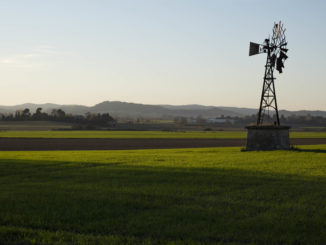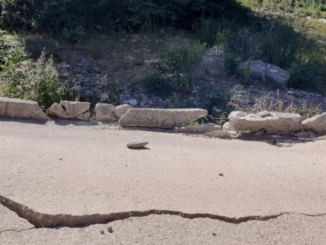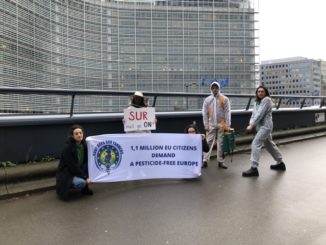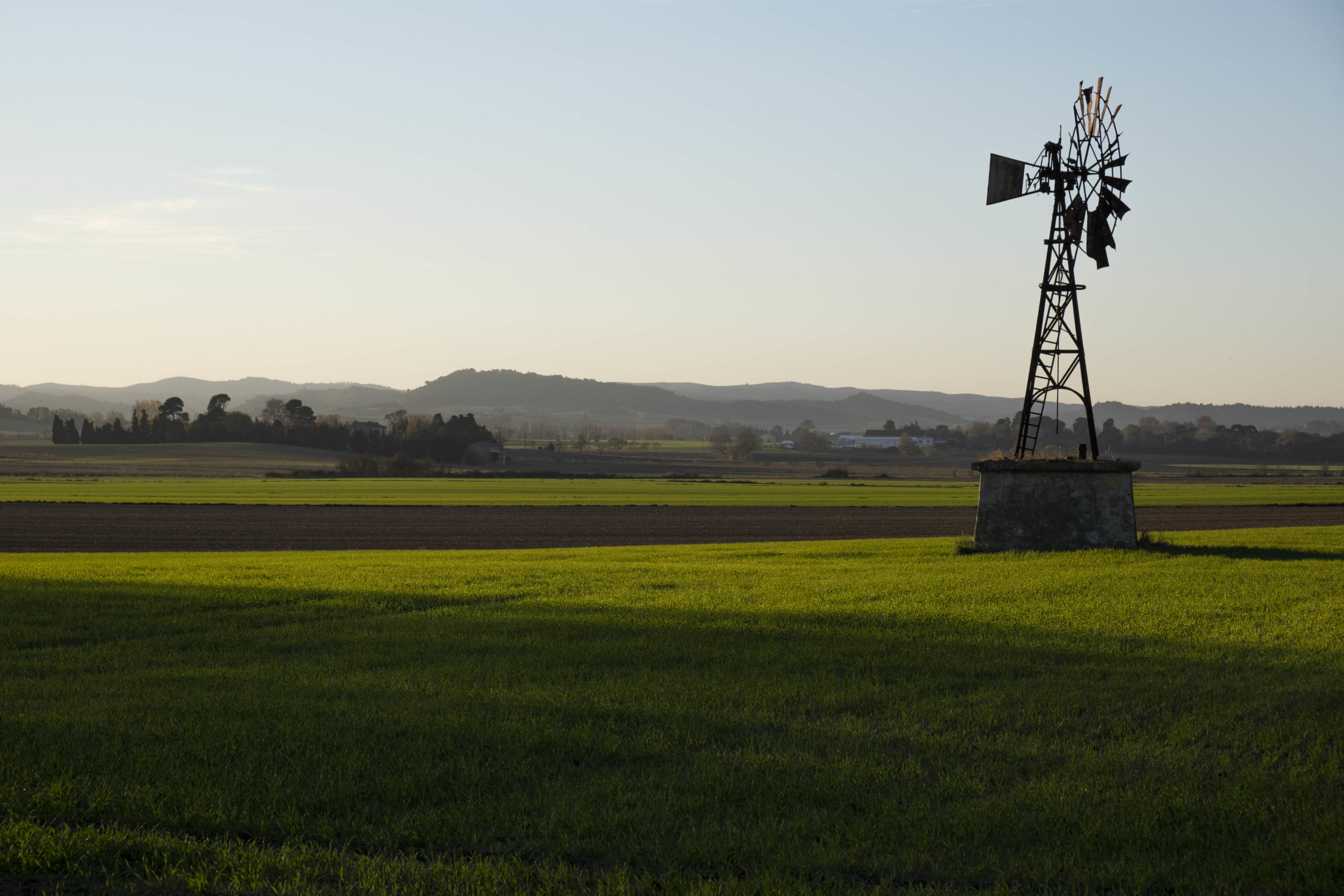
What was being said about pesticides at the time of the release of biologist Rachel CARSON’s reference book “Silent Spring” in 1962 – over 60 years ago? Molecular and cellular biology could already shed light on the great similarity between the cells of “pests” and those of humans. Therefore, any product intended to kill or disrupt a living being cannot be without deleterious effects on biology, and thus human health: “[Mrs. CARSON] adds references to history… to show the absurdity of anti-cancer campaigns if carcinogens are allowed to multiply.”
The Sustainable Use of Pesticides (SUR) regulation still proposes at least another thirty years of coexistence with pesticides, as its objective is the phasing out pesticides by 2050 (one of the objectives of the “Farm to Fork” strategy attached to the Green Deal). Can we afford to wait another three decades? No, say those who advocate for an 80% reduction by 2030 (rather than 50%).
This analysis is based on accumulated knowledge of the impact of pesticides on health, distinguishing two types of exposed populations: farmers and other professional pesticide users (Part 1) and rural communities (Part 2).
In this first part, French initiatives in service of the health of farmers affected by pesticide exposure will be highlighted. Analysis by Marie-Lise Breure-Montagne of the Rural Resilience project.
Lire cet article en français
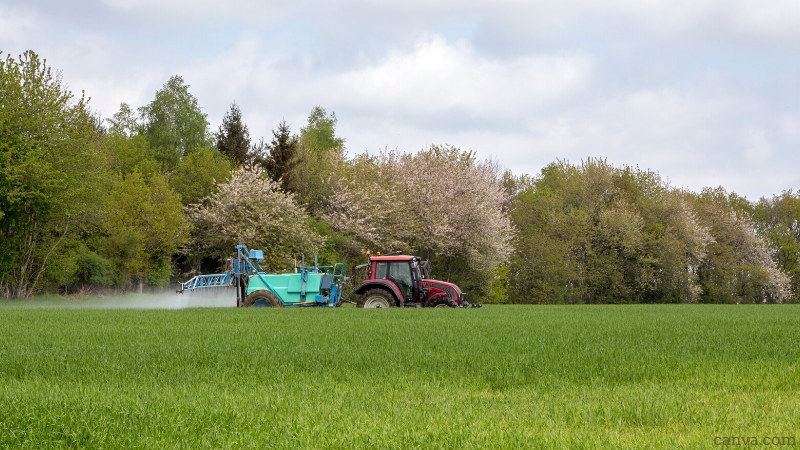
The long-neglected and underestimated impact on farmers’ health
France turns out to be the “European champion” in pesticide consumption by volumes of pesticide sales (2020), with also slightly higher than the European average (3.3 kg/ha/year) in spraying (3.44 kg/ha/year) (Table 1). At the INRAE colloquium in Paris, on March 21, 2023 the takeaway was:
“We are facing a paradox: despite the decrease in the number of active substances available on the market (the most problematic have been withdrawn from the market, at least in Europe): [and yet] the volume of consumption does not decrease. [We must recognize] the failure of incremental innovations to reduce consumption [through ECO-PHYTO plans]”
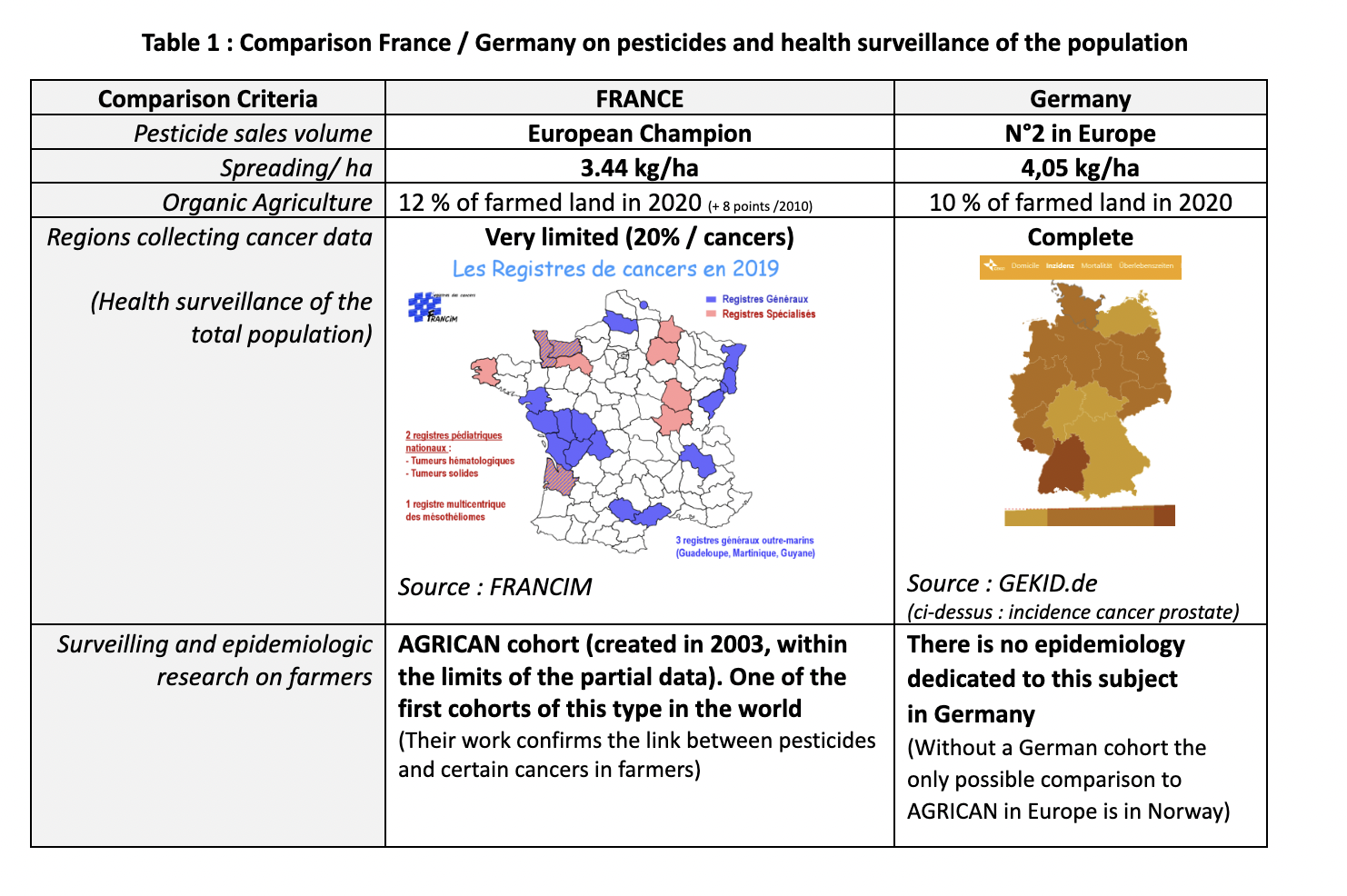
A very slow awareness of the effects of pesticides
As early as 2013, the French public research entity INSERM produced a comprehensive study on the impact of pesticides on human health. Its findings?
“On the scientific knowledge level, the contemporary period is marked by the accumulation of epidemiological data highlighting an increased risk of certain chronic pathologies, such as Parkinson’s disease, certain malignant blood disorders [blood cancers] or prostate cancer, among populations most exposed to pesticides” (Inserm, 2013).
As the European Directive SUR is being prepared, the 2021 version of the INSERM study, despite its methodological biases (analysis of 5,000 publications) only further confirms these findings and lengthens the list of pathologies where there is a link between pesticide exposure and the onset of a pathology (see Figure 1). As the scientist Rachel CARSON already suggested, cancers occupy a large place on this list.
What should also be explained to pesticide users: when the carcinogenic effect of a pesticide (or several!) initiates a cancer, then the immunosuppressive effect (of some pesticides) can prevent the organism from defending itself; finally, the endocrine effect of these various chemical poisons boosts the growth of certain tumor cells from primary foci, even metastases. The most frequent cancers in both men (prostate) and women (RH+ breast cancer) are hormone-dependent cancers.
Through its review of the scientific literature, the INSERM 2021 study confirms that other more recent pesticides seem just as “efficient” as DDT in interacting at several levels of human physiology. Super-pathogens, on hand and on demand!
Has the lesson of DDT been useless? Let us remain optimistic: the European court now requires the consideration of cocktail effects in the analysis of pesticide effects. Specifically, the cumulative effects of components of plant protection products must be taken into account (Court of Justice of the European Union in a Grand Chamber judgment of October 1, 2019; Case C-616/17).
Despite their significance, these scientific insights are still far from influencing practices in the authorization process. The NGO PAN Europe denounces, through its campaign Ban the ‘Toxic 12’, the presence on the European market of unacceptable molecules:
“Dimoxystrobin fungicide is used in northern and southern Europe on cereals, oilseeds and grass. It is classified both as suspected of damaging the unborn child (toxic to reproduction cat 2) and of causing cancer (carcinogen cat 2). Studies showed tumors in the intestines and thyroid“.
In this particular case of hazardous fungicide : a decision could be made 7 years ago…
The real threat of pesticides, in general, and their carcinogenic effects, in particular, is plain to see. If we, the Europeans, had unlimited means to conduct studies, the list of pathologies attributable to pesticides would undoubtedly be longer. And when consulting sources other than INSERM: cancers such as cholangiocarcinoma are “increasing in all age groups”, bladder cancer carries a “fourfold risk for female farmers”, etc.. etc…
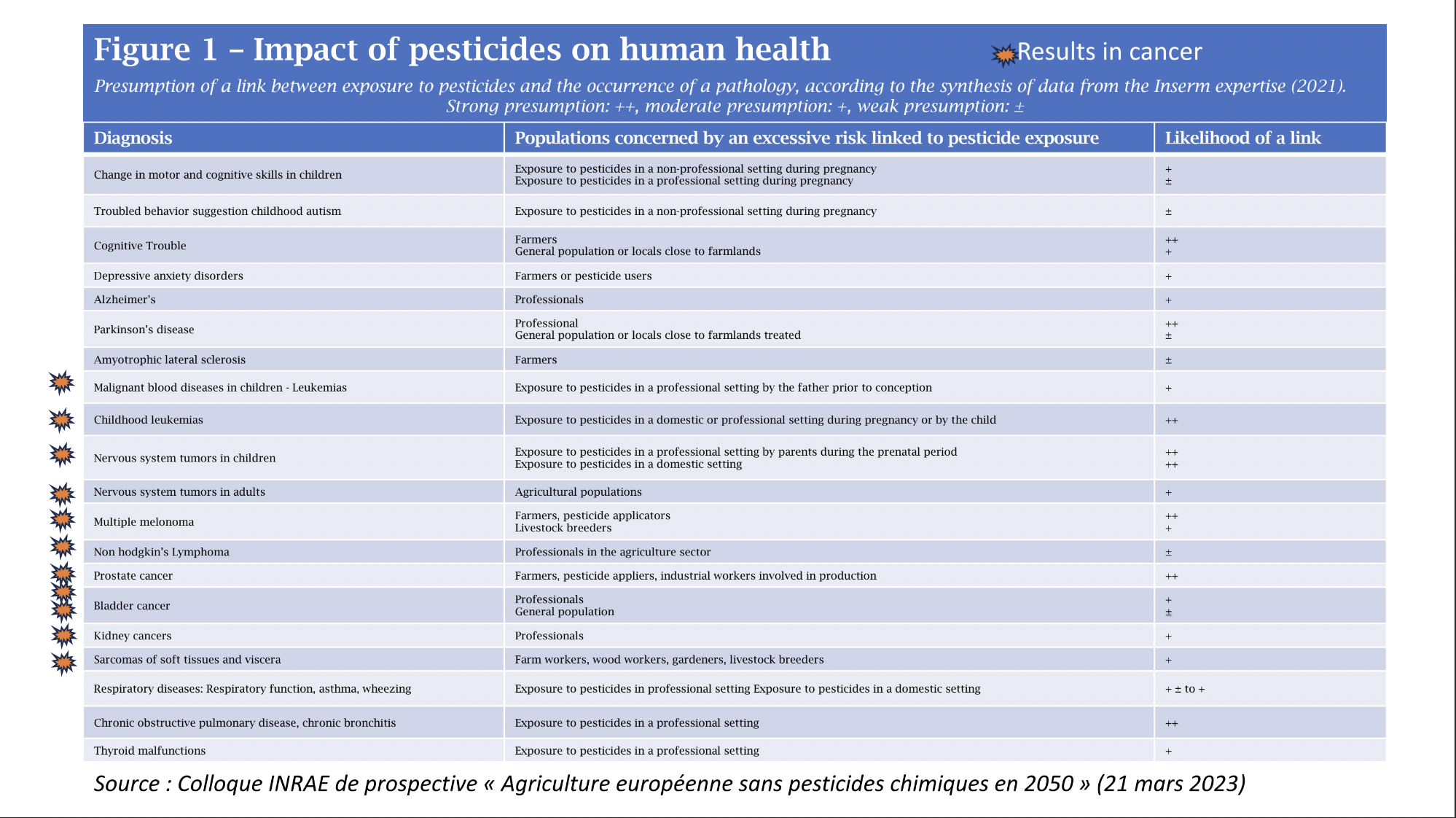
Deconstructing the means of silencing the effects of pesticides on the health of farmers.
For the pesticide companies and lobbies, the issue of occupational exposure has long been reduced to its simplest form: accidental contact with the product (at the time of its use), causing an accidental poisoning known as “acute”.
This engenders that, by admitting exposure through the skin (for pesticide product approval files), other (more indirect) sources of exposure to these molecules are poorly or not documented: “
Metrological studies on pesticides conducted by hygienists in Europe and North America (mainly at the initiative of industrialists within the framework of market approval for these companies) have shown for several decades that the major route of exposure to pesticides in the workplace is through the skin“ (source: INSERM 2013).
This allows the harmful effects of the products to be reduced to individual clumsiness on the part of pesticide users! This also denies the impact of pesticide residue in water, air, soil, and other surfaces, etc…
It is also assumed that it is always possible to wear protective equipment: however, as researcher Pierre Lebailly indicates:
Everyone knows that it is not possible to wear personal protective equipment during re-entry tasks (tasks within a so-called “DRE” period after spraying: often carried out by women) in viticulture, arboriculture, or greenhouses. However, without this equipment, the risk to the health of professionals evaluated within the framework of approval is not acceptable… and yet many pesticides are still on the market…”.
Chronic poisoning by pesticides remains difficult to demonstrate (especially since mice: an animal model in toxicology have a too short lifespan to study in the laboratory). Thus, we must rely on human testimonies, to illustrate the extent of the phenomenon.
Michel is a 58-year-old agricultural employee in a large-scale farming operation in the Ile-de-France region, who has been diagnosed with prostate cancer. Before this diagnosis, he had absolutely no awareness of such danger ; in remission, he still performs the same work:
“The cabs of our tractors allow us to feel protected” he explains, happy to be alive and active despite the consequences of prostate surgery.
This prostate cancer has been recognized as an occupational disease related to pesticides for both the agricultural and general regimes (one of the most recent victories of the Phyto Victims Association, founded in 2011). Michel discovered his rights on this subject thanks to information on the social security website (that of the general scheme and not that of the MSA: Agricultural Social Security, where “the web page on this subject is very difficult to find”…). Thanks to the written traceability of all his professional activities (a good habit of logging!), Michel managed to count that he had been exposed to more than 500 different “phyto products” during his professional life (different formulations). For his occupational disease recognition file, only the last 10 years of pesticide invoices are requested from his employer to strengthen the file, although his exposure is actually four times longer.
Master Lafforgue, lawyer for victims of asbestos, and for people exposed to French nuclear testing, Paul Francois’ lawyer (against MONSANTO and the commercialization of Lasso), and the Phyto Victims Association, denounce an under-recognition of occupational diseases related to pesticides. In addition, “compared to asbestos, there is no full compensation for victims of pesticides”.
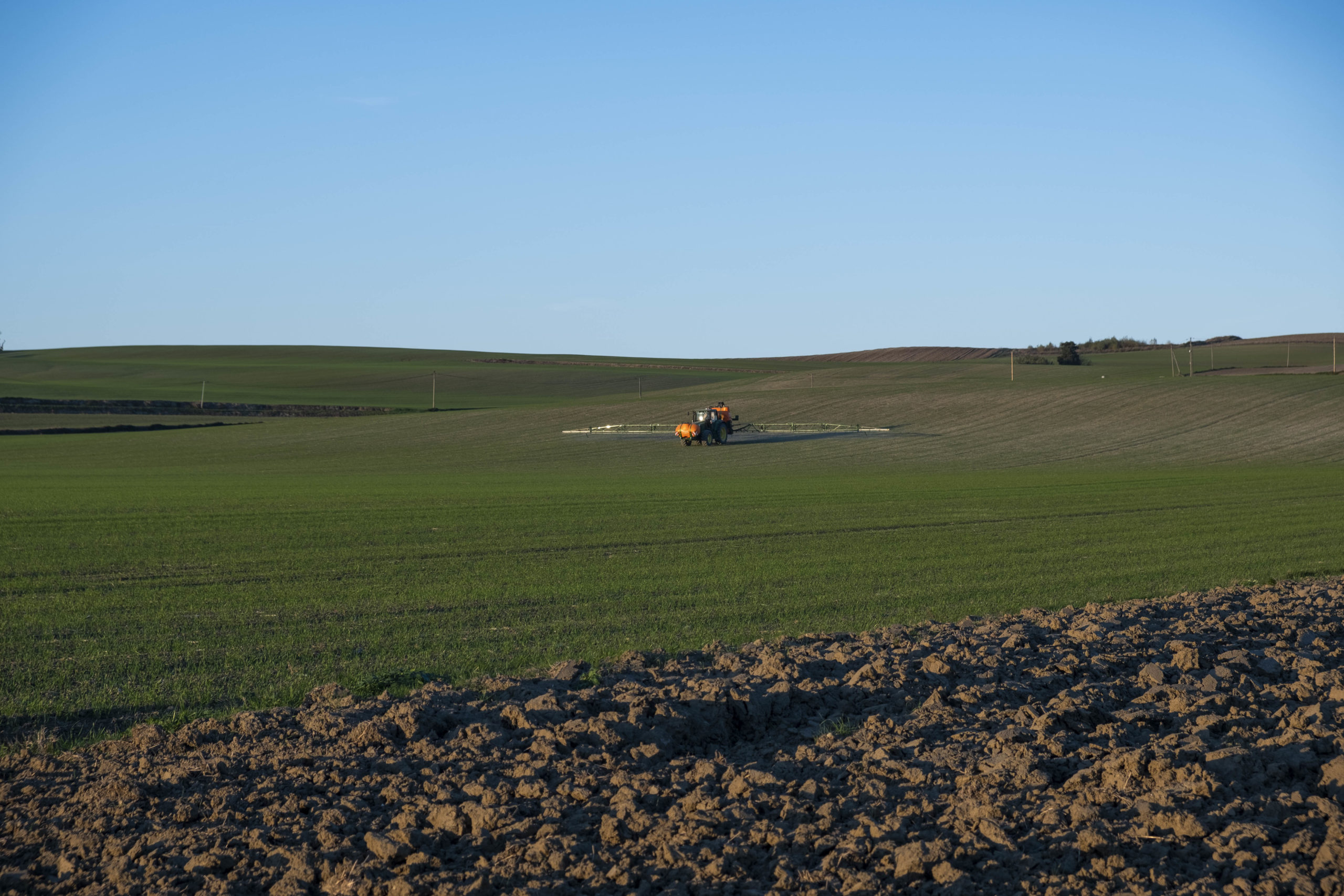
Two French initiatives: the Phyto Victims Association and the Agrican cohort
The creation of the Phyto Victims Association stems from a very long process:
“Following the adoption, in 2002, of compulsory insurance against occupational accidents and diseases for non-salaried agricultural workers, several farmers suffering from pathologies that could be attributed to their exposure to pesticides (neurodegenerative diseases, malignant blood diseases) undertook individual steps to obtain recognition of occupational disease [without success]” (INSERM 2021).
Around forty farmers who were victims of pesticides came together in 2011 to create the Phyto Victims Association, led then by Paul Francois.
To be clear: among the founders, some have now died from their illness (5-year survival rate for some blood cancers: less than 30%); their families are sometimes still waiting for compensation… after two decades of effort. Like an army of resistants, other new pesticide victims join the fight: for the recognition of occupational diseases related to pesticides, and above all to deconstruct the discourse on phytosanitary products, which has been too long taught to young people in training. In 10 years, the association has contributed to the recognition of Parkinson’s disease (2012), malignant blood diseases (2015) and prostate cancer (2022) as occupational diseases.
Agrican, which began in 2003, is the largest study in the world conducted on cancers in the agricultural professional environment, carried out by researchers from the François Baclesse Center in Caen and the University of Bordeaux. On the timeline of the cohort’s work, it can be seen that the results on prostate cancer come earlier (half a decade earlier) than those on breast cancer.
While both are the leading causes of cancer in men and women, with almost identical frequency (one million people each decade in France overall). If prostate cancer was studied first, it was because of the urgency of chlordecone (a banana insecticide):
“*It was necessary to respond [to the French context], to demonstrate that chlordecone is not the only pesticide inducing prostate cancer and that the same thing is happening in mainland France as in other countries. Without Agrican data, this very common cancer in the general population and even more so in farmers could not have been classified in the table of occupational diseases” (Pierre Lebailly, Agrican coordinator).
“Cohorts of farmers are few” in the world (Norway, United States). There are no such cohorts in Germany, because in general, there is no occupational epidemiology in this country. At the EPICO international congress, the Germans we meet are representatives of their agrochemical firms”. On the other hand, Germany’s great strength is that the whole country is equipped with cancer registries (Table 1).
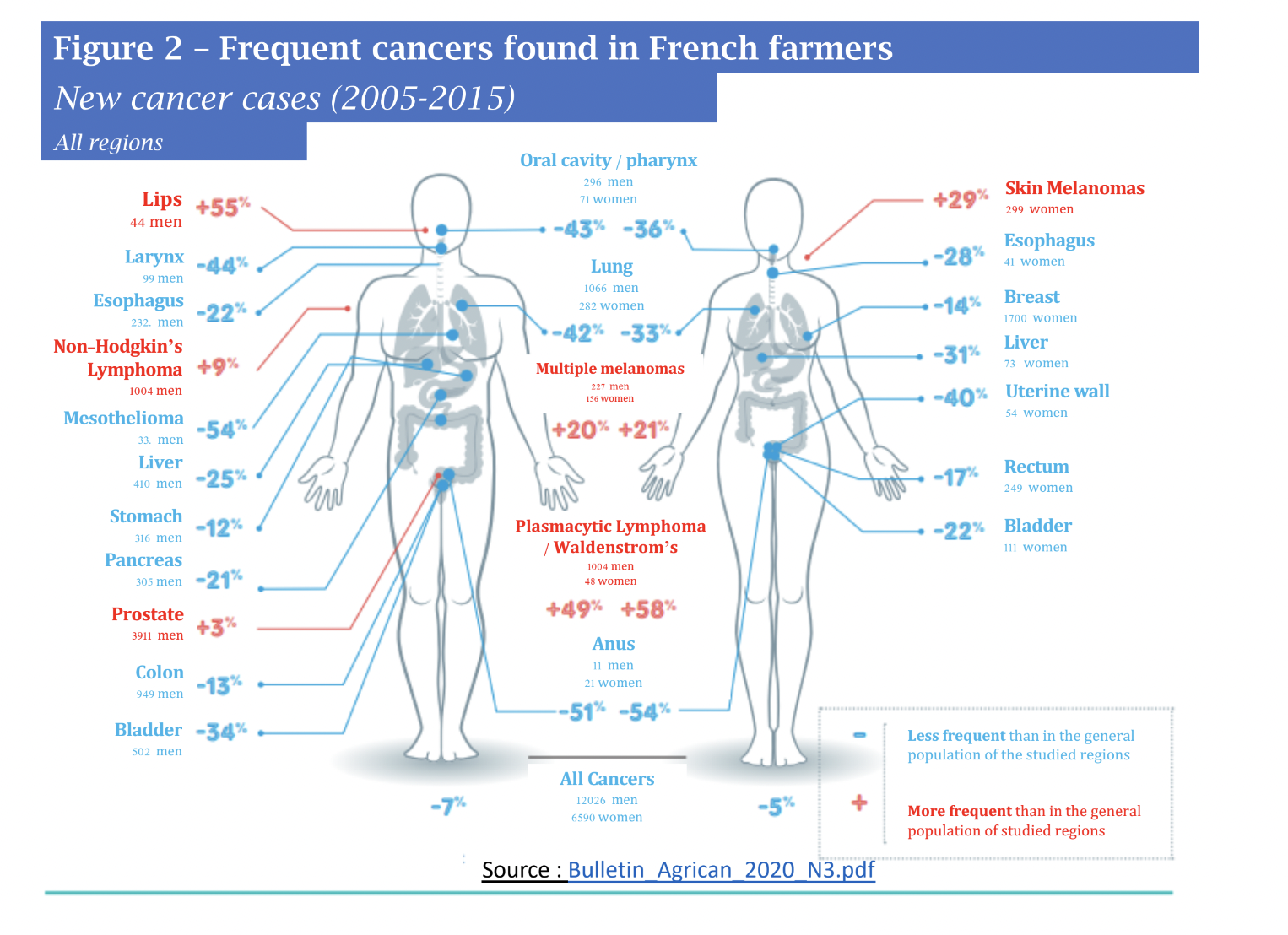
Conclusion: Is France a “good student” in phasing out pesticides?
Yes, because these French initiatives (INSERM study, AGRICAN cohort, Phyto Victims fights) have the merit of providing other truths about pesticides than those spread by those who sell them. The recognition of occupational diseases related to pesticides is a good start, as it can awaken an entire profession largely hypnotized by the productivist narrative.
The AGRICAN cohort has succeeded in turning one of France’s weaknesses (the absence of full coverage in cancer registries: Table 1) into a strength, and producing a clear and concise message:
Yes, cancers (sometimes difficult to cure) are more common among French farmers than in the general population (see figure 2).
Yes, because each of these initiatives contributes to removing individual responsibility or guilt from the sometimes dramatic consequences of exposure to pesticides: the ultimate goal of any public policy.
No, to the extent that these initiatives focus on curative actions (e.g. epidemiological follow-up of populations, after the marketing of substances with questionable properties, known since toxicological tests on animals).
No, because as shown by the Foodwatch study Locked-in: taxes on the most toxic pesticides in Denmark are the only public policy instrument identified to date that has succeeded in reducing dependence on pesticides.
No, because judicious use of pesticides is not France’s strong point, stuck in its pride as an exporting agricultural force. Therefore, the concern over loss of yield caused by giving up pesticides can be stronger than elsewhere (instead of thinking more globally about farm income, relieved of input purchases). Many NGOs have characterized this loss of yield, in order to better encourage a different way of thinking about drastic pesticide reduction:
- -30% according to Agroecology Europe ; as early as 2018, Frenchman Pierre-Marie Aubert and his co-authors preferred to give a range between 10% and 50% depending on the production.
At the INRAE symposium in March 2023, PAN preferred to indicate that the loss of yield in the field (if pesticide use was reduced) could be largely offset by a fight against food waste throughout food supply chains, which should be shortened and territorialized.
More on Rural Resilience
Ernährungsrat: The democratic potential of Food Policy Councils in Germany
France | Democratising Food Policy – Tweaking The Financial Toolbox
Rural Realities | Succession – Passing It (All) On To The Next Generation



